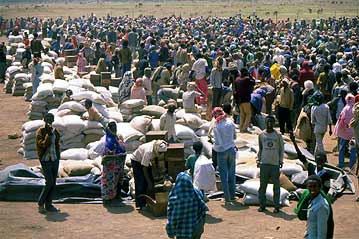Unit plan for ages 12-14 in Geography: Living Conditions in Refugee Camps in Africa
Unit plan for ages 12-14 in Geography: Living Conditions in Refugee Camps in Africa
-

UNIT OBJECTIVES
Knowledge
- To understand clearly the concept of population density
- To apply that understanding to the case of Rwandan refugees in camps in Tanzania (1994-96)
- To understand the implications of overcrowding for refugees' well-being
- To understand the living circumstances of refugees in an African refugee camp
Skills
- To practise skills of reading, interpretation and analysis of data contained in tables
- To practise inferring conclusions from data presented
Values
- To appreciate the restrictions and pressures of African refugee life
- To appreciate the contrasts between those hardships and the comparative well-being of the students' home town
- To develop empathy and a sense of solidarity with African refugees
- To reflect upon fundamental human rights - things to which all human beings are entitled by virtue of their common humanity, and not because any law guarantees them
LESSON 1: Refugee camps as large as cities
|
||||||||
LESSONS 2 and 3: Maintaining a Refugee Camp
|
||||||||


